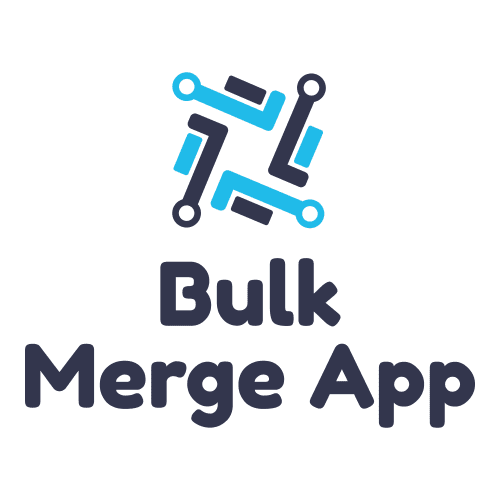Navigating Platform Migration: A Comprehensive Handbook

In today’s technological jungle, every data-driven company eventually faces an important digital move: platform migration. Maybe you’re transitioning your CRM from Hubspot to Salesforce or switching clouds, your CMS, or your ERP. All of these moves fall under the scope of platform migration. And, regardless of initial and final platforms, all of these transitions rely on a standard procedure. The rationale, scope, and steps for this procedure are detailed below.
Platform migration is the movement of information and company workflows from one platform to another. The reasons your company may need to migrate are myriad. Examples include:
- Your expanding business outgrew the old platform’s capabilities
- Your business would benefit from new or additional tools
- The old platform was discontinued
- The old platform experienced a price increase
- The old platform demonstrated unacceptable security vulnerabilities
Before starting this process, be aware that platform transitions are detailed and complicated procedures. Common challenges to migration include:
- User resistance or confusion
- Data loss
- Processing defects
- Resource allocation away from other priorities
Luckily, when properly executed, the benefits of migration vastly outweigh the costs. Benefits of platform migration include:
- Gaining a competitive advantage
- Increasing user efficiency
- Reducing operational costs
- Obtaining better integration with additional platforms or software systems
- Increasing customer satisfaction and loyalty
These transitions vary greatly depending on your needs. For example, the details involved in an ecommerce platform migration are dramatically different from the steps of a google cloud platform migration. Proper preparation and platform expertise are necessities.
When it comes to platform migrations of any scale, preparation is the incontrovertible key to success. Be proactive with your plan and tailor it to your business’s needs. Consider these three steps to get started:
- Assess The Current Platform and Associated Workflows: start by taking a thorough inventory of what you have and evaluate it in light of the coming transition. Be thorough: consider all of the data, processes, users, and integrations contained within the current platform. Decide whether each of these components should be transitioned, cleansed, or moved out of the system and into a separate storage facility. Remember to keep all relevant regulatory rules in mind while you catalog.
- Identify The Goals and Objectives of Migration: to ensure that your data and processes end up in an ideal state, you need to carefully select your new platform. Base this decision on considerations like cost and feature availability. Compare platform options to the most pressing needs of your team.
- Analyze All Risks and Dependencies: before deciding on a finished plan and platform, figure out where the greatest dangers lie. Then reinforce your transition scheme to ensure the sanctity of the most vulnerable or sensitive information.
With a thorough and well-communicated plan in place, it’s time to execute. Examples of migration strategies include:
- Phase Designation: with this technique, you create detailed stages within the overall transition scheme. You can break the stages down by users or by data. For example, plan to transition users A-K or only certain types of customer data in the first wave. This strategy allows you to test and monitor smaller amounts of precious information at each stage. The disadvantage is that it extends the process and eats up company time.
- Capping and Growing: this technique places every new user within the new system while still maintaining the old ones within the old. This can ease the transition process for deeply-ingrained workflows. But it also creates the added complications associated with navigating and maintaining two independent platforms.
- All At Once: the fastest choice is to transition everything in one massive effort. This method is efficient but can lead to a pile up of complications. Be prepared for an all-hands-on-deck mentality when the time comes.
Whichever method is best for you, the end result is the transition of all data, applications, and workflows to the new platform.
Ensuring a Smooth Transition and Minimizing Disruption
Independent of your chosen platform migration strategy, there are universal steps to ensure an optimized process. Considerations include:
- Testing and Validation Procedures: after each data transfer step an expert needs to double check that the information was properly integrated into the new platform. The best way is to first transition a small test set of each type of data. Validate with these before initiating your primary transition processes.
- Mitigating Downtime and Performance Impact: properly prepare all affected teams well beforehand. When normal workflows are affected, figure out alternative uses for employee time. For example, consider scheduling training sessions for the new platform.
- Communication and Stakeholder Management: your platform transition is a boon to your business. Stakeholders should be both informed and excited. Hype the transition as it approaches and make an event of the successful launch.
When it comes to large transitions, a cross-functional migration team is a must. This should be composed of people familiar with the technological and functional aspects of migration as well as people who understand the importance of budgeting and company timelines.
Before making a plan, everyone on the team needs to first refresh themselves on all relevant security and compliance requirements. This places legal necessities at the forefront of all transition considerations. And, to conform to best practices, this team needs to strictly document every step of the migration process. This maximizes transparency and accountability. It can also help mitigate downstream mistakes.
Post-Migration Optimization and Monitoring
Even once you’ve completed your platform transition, the process is far from over. To ensure a successful launch, additional steps include:
- Fine-Tuning Configurations and Settings: every new platform will have some tweaks to work out. Make sure there’s time for this step in your initial migration plan.
- Monitoring Performance and User Feedback: the importance of this cannot be understated. You may want to employ a team specifically to manage and respond to user feedback. On the day of launch, have qualified personnel on hand to manage any last minute problems.
- Addressing Post-Migration Issues and Challenges: continue to follow up with all users until workflows reach a steady state of productivity. The timing of this is difficult to anticipate, so be sure to allocate enough resources for post-launch optimization.
With the right expertise, platform transition is a sound, seamless process. But if you’re unfamiliar with the nitty-gritty details, it can be a disastrous resource sink. The experts at Astreca Consulting know all of the ins and outs surrounding Salesforce and Hubspot transitions. Consult them today for affordable, worry-free solutions to your platform transition needs.
#ApplicationMigration #MigrationStrategy #Optimization #PlatformTransition #PostMigration #RiskManagement






